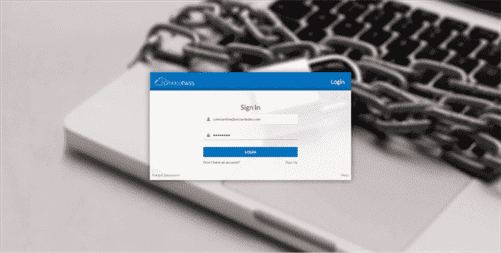Using the Stages of Team Development MIT Human Resources
These tools may include team development discussions, training, or workshops. This is when things “get real.” Having found some level of comfort on the team, some team members may begin to distrust others—whether because of interpersonal clashes, past experiences or other reasons. Resistance to assigned tasks and bristling at certain rules or methods may occur. At this stage, members often begin to question the wisdom of the project at hand or even the purpose of the team itself. Draw a simple four-stage diagram and ask each person to place a dot or sticky note next to the stage they think the team is at.
The main goal here is to keep the momentum going so that the project wraps up on time. Disagreements are unavoidable on teams, especially when each person on the team has a different perspective on how to approach the issues the team encounters. When you all work in the same location, it can be easier to hash out problems quickly. On a remote team, you need to be more thoughtful about the tools and the processes that you use to identify and deal with disagreements.
Bring out the best in your employees with high-performance management
The way you decide to treat your team members decides the way team performance going to be. This blog will help you understand the importance and stages of team development for productivity. The group development process is important because the system allows leaders to identify the correct stage of development and accurately assess the level of teamwork.

The key to moving through this stage is to make things as simple as possible. Hopefully, your team’s purpose or desired outcome is understood by this point. Now it’s time to make sure everyone understands the incremental milestones on the way to your goal, and what their role is in what are the 4 stages of team development helping the team get there. Clarity as to what success looks like at each milestone will give your team a much-needed confidence boost. Having a way to identify and understand causes for changes in the team behaviors can help the team maximize its process and its productivity.
Why is Team Development Important?
There may be regret as the team ends, so a ceremonial acknowledgement of the work and success of the team can be helpful. If the team is a standing committee with ongoing responsibility, members may be replaced by new people and the team can go back to a forming or storming stage and repeat the development process. By taking these steps, leaders can help their teams progress through the stages of group development and achieve their goals. It’s important to remember that not all teams will linearly go through these stages, and it’s okay for teams to revisit earlier stages as needed. The key is to remain flexible and adaptive in your approach to team management, always keeping the team’s needs and objectives in mind. Some teams reach a stage of development in which they thrive at their individual and collective tasks.

The most effective team member is one that knows he or she needs to work with his or her team members, a good team leader will know all of this like the back of their hand. As mentioned before, these stages usually pass naturally regardless of if each participant knows or not. Knowing each step and what it is supposed to do will allow each member to get the maximum out of the experience and not miss anything that could be a critical part of team building. Tuckman’s model for group development is known and widely taught among business owners.
Do the five stages of team building always occur in the same order?
Identifying each of the 4 stages of team development helps you underscore your team’s needs during each one. These companies are investigating how to begin their digital-transformation journeys. They need help to identify the full value that Industry 4.0 can bring to their business and to develop a network-wide strategy and deployment road map. It’s time to look back and observe the falls and try to improve for the next project. It’s time to celebrate for the project’s success and team performance.

The team may find that this is an appropriate time for an evaluation of team processes and productivity. The most commonly used framework for a team’s stages of development was developed in the mid-1960s by Bruce W. Tuckman. Although many authors have written variations and enhancements to Tuckman’s work, his descriptions of Forming, Storming, Norming and Performing provide a useful framework for looking at your own team. This is because your team recognizes how they can trust you and each other in order to complete tasks, move towards their objectives and rely on each other for help. Your team needs to communicate clearly and, rely on one another rather than turn on each other. This is a crucial point in team development where leaders can pinpoint bottlenecks, areas of improvement and couple them with team strengths to build forward momentum.
What Are The Stages Of Team Development?
This gives them insight into the bigger goal but also breaks down the timeline into smaller increments. Project scheduling is a critical and crucial part of project management and planning. It’s the yellow-brick-road that, when followed, will lead you to the gleaming project closure right on time.
Here, it’s typical for teammates to feel excited, anxious, and curious about what lies ahead. In another example, a global consumer company had been piloting digital innovations in a number of business units for some time, but with few ideas achieving much impact beyond the individual line or site. Company leaders recognized the need to clarify which digital solutions could contribute to overall business needs and priorities, and where to focus transformation efforts to implement solutions at scale. The first phase of this approach includes a network scan to identify the value at stake and a priority list of technology use cases, taking into consideration data, IT/OT, and organizational maturity.
Further developments
Take a cue from the Atlassian Team Playbook and make time for these three activities. Click the name of each activity below to get step-by-step instructions and other helpful resources like templates and videos. Some teams do come to an end, when their work is completed or when the organization’s needs change.
- Share a link to these meeting notes afterwards so that everyone has access and can review it later.
- Even if you’re not “Agile” (with a capital A), you self-organize around tasks.
- In another example, a global consumer company had been piloting digital innovations in a number of business units for some time, but with few ideas achieving much impact beyond the individual line or site.
- As you communicate with them you notice how confidently they articulate their ideas.
- When forming a team, leaders need to build trust, set expectations and encourage involvement.
Norming is what happens when the team members begin to settle into their roles. They have accepted their position, they understand what’s expected of them, and can see how their position contributes to the completion of the project. This usually includes basic introductions, getting a “feel” for your team members and who will work together well, and identify potential early problems. When it comes to changing behavior, positive reinforcement outperforms negative reinforcement. Instead, promote a positive workplace culture by praising occurrences and actions that your staff members exhibit and by encouraging them to do more of the same. Regarding improving team performance, positive reinforcement is noticeably more successful than individual criticism.
Norming
Members may disagree on team goals, and subgroups and cliques may form around strong personalities or areas of agreement. To get through this stage, members must work to overcome obstacles, to accept individual differences, and to work through conflicting ideas on team tasks and goals. Failure to address conflicts may result in long-term problems. Keep reminding the team to check in with each other regularly in person or via instant chat, but stay out of their way.


